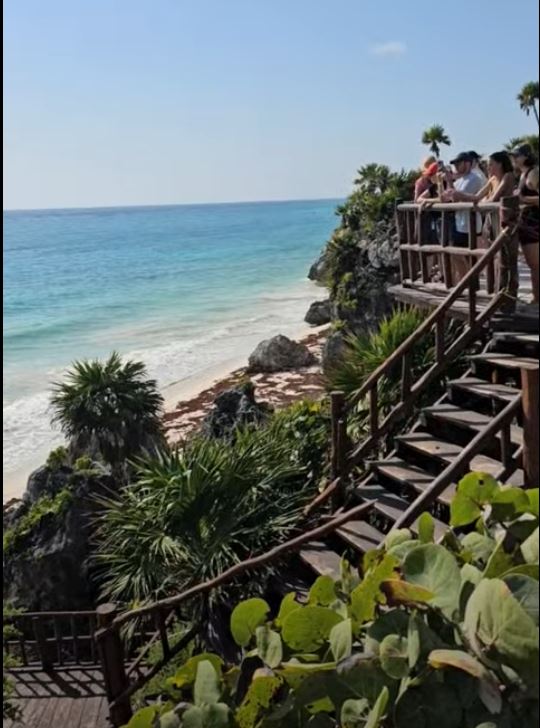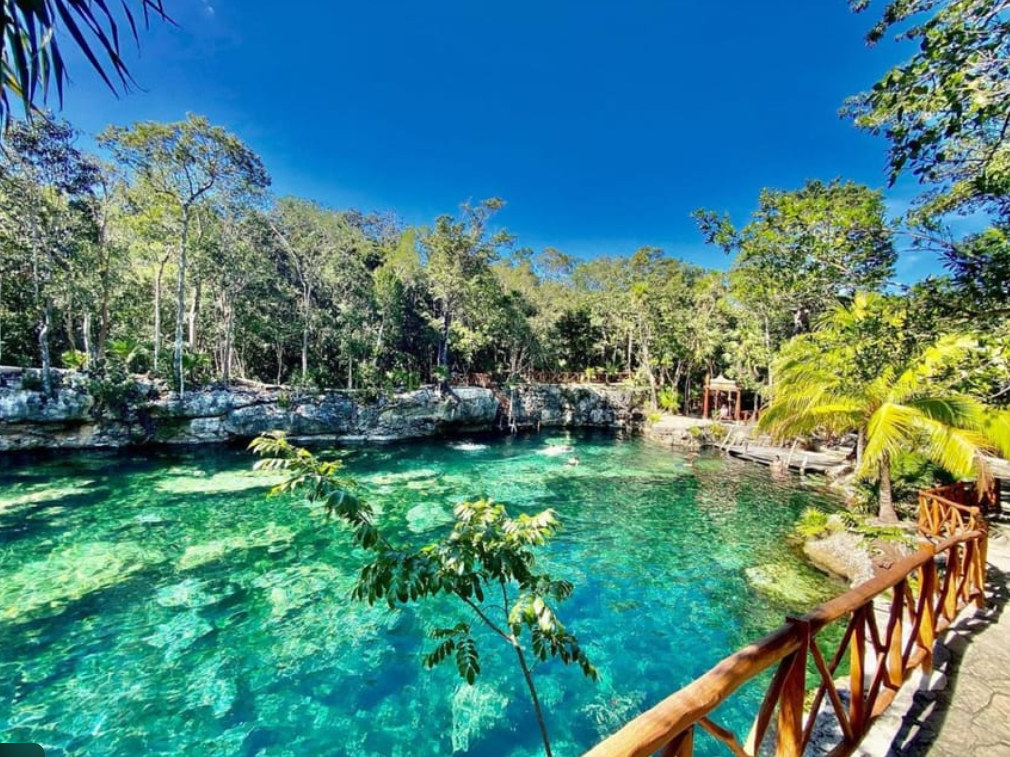Some say team captains could use a stick to help score. The game was both a sport and a ritual. There are different stories about whether the winners or losers were sacrificed, but either way, it was seen as an honor. Standing in the court, you can feel how intense and important the game must have been.


















 One spot you don’t want to miss at Chichén Itzá is the Great Ball Court. It’s the largest in the Americas, over 500 feet long. This is where the Maya played a sacred ball game called
One spot you don’t want to miss at Chichén Itzá is the Great Ball Court. It’s the largest in the Americas, over 500 feet long. This is where the Maya played a sacred ball game called 



 As we headed back toward Tulum, we made a quick stop in Valladolid, a quiet colonial town with cobbled streets and colorful buildings. We had about 40 minutes to explore on our own, so we visited a local church and grabbed some fresh churros from a street vendor. It wasn’t a long visit, but it added a nice cultural touch to the day.
As we headed back toward Tulum, we made a quick stop in Valladolid, a quiet colonial town with cobbled streets and colorful buildings. We had about 40 minutes to explore on our own, so we visited a local church and grabbed some fresh churros from a street vendor. It wasn’t a long visit, but it added a nice cultural touch to the day.


 Going on your own without a tour will definitely give you more freedom to explore at your own pace and maybe save you some money. Admission to Chichén Itzá alone is around $30–$35 USD per person for adults (~$16 for Mexican Citizens) and ~$5 for children. Check their website
Going on your own without a tour will definitely give you more freedom to explore at your own pace and maybe save you some money. Admission to Chichén Itzá alone is around $30–$35 USD per person for adults (~$16 for Mexican Citizens) and ~$5 for children. Check their website 


